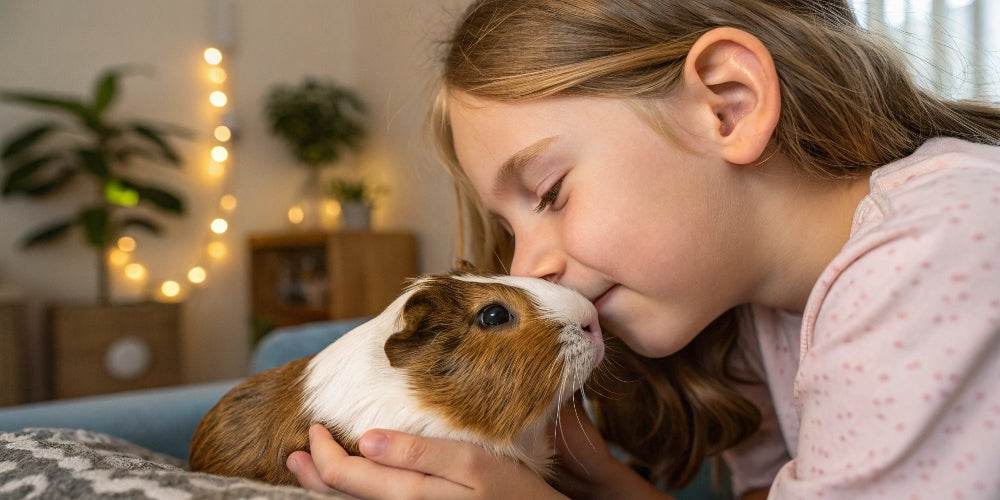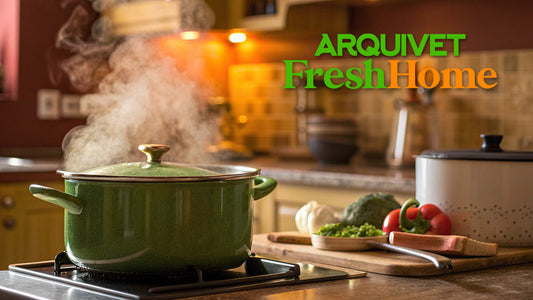
Domestic rodents: what types are there and how should they be cared for?
Rodents are small, mostly furry mammals that share similar behaviors, although they have different characteristics and needs. They're the perfect pet if you're looking for an animal that doesn't require too much of your time, as they're easy to clean and care for, and they don't take up much space.
Below, we'll explain the types of rodents you can find and their different care options. Keep reading!
What types of rodents are there?
The most common are hamsters, chinchillas, rabbits and guinea pigs.
Hamsters
Hamsters are small rodents characterized by being very affectionate, solitary, and territorial, so you won't have a problem if you want to have just one as a pet.
You should have a cage appropriate for their size and with toys for them to move around and entertain themselves, as they are high-energy animals that need physical exercise throughout the day. You will have to be careful with their diet, as obesity is one of the most common diseases in these small animals, mainly due to a lack of physical exercise and overeating. For their diet, they will need a quality hamster foodWith a variety of seeds and vitamins, they can also eat vegetables, such as chard, zucchini, carrots, pears, apples, or watermelon as a supplement to their feed. Generally speaking, they tend to have a relatively short lifespan: between two and three years.
Chinchillas
Chinchillas are friendly, sociable, and affectionate animals. Thanks to their cute and friendly appearance, they have become the second most common rodent that people choose as pets. Because they are so sociable, they will need your attention and affection, so keep this in mind when making your choice.
They generally have a very thick, silky coat that requires a sand bath at least once a week. For this type of grooming, a specific sand is often used, which the animal uses to bathe itself.
Hay should always be included in their diet, as it will help their digestive tract function properly. We can supplement this diet with chinchilla food. Occasionally, we can give them some vegetables or a small piece of fruit, ideally an apple.
The cage should be tall, at least two stories high, so the chinchilla can jump and move around. It's also recommended that it have a wheel or hammock for entertainment and exercise.
It's important to note that the animal will need to be taken out of its cage occasionally to stretch its legs, jump, and run, as these animals require some mobility. A good place to stay is a room or other environment where it's not at risk of escaping or hurting itself. With proper care, chinchillas have a life expectancy of 15 to 20 years.
Rabbits
Rabbits are calm, playful, very intelligent and active animals.
They'll need a specific cage, although ideally, they should also be able to spend plenty of time outside, for example, running around the house, so they can run around and play. They'll require your attention and training to establish a bond and thus ensure they don't chew on furniture, cables, rugs, or anything else they can get their hands on.
Rabbits are very sensitive to temperature and can become ill, so they should be kept in a cool, stable environment.
Hay should always be available as their main food, although we can also add vegetables such as chard, celery, chicory, watercress, lamb's lettuce, escarole, green beans, peppers, endives, borage, artichokes, arugula, cucumber, carrot and beet leaves, Chinese cabbage, clover, and dandelion.
He rabbit feed It can be given in small amounts, as it shouldn't be the basis of your rabbit's diet. A ratio of approximately 15% of feed per serving of food will be sufficient.
Guinea pigs
Guinea pigs are very sociable and gregarious animals that prefer to live in the company of their peers. They are also quite intelligent and can form very strong bonds with their owners.
As a recommendation, you should let your guinea pig out of its cage to run and play at least once a day. The cage should be cleaned at least twice a week, as these animals tend to be very messy.
The diet of guinea pigs consists of 3 main elements: Hay, fresh food and quality feedIt should be composed primarily of 70% hay, 20% fresh food, and 10% dry food. Keep in mind that it's very important that they always have hay and water available.
They will also appreciate a regular mealtime, so ideally, it's advisable to feed them twice a day at a fixed time. It's very important to check your pet's weight once a week and consult your veterinarian for a reference weight, as a 10% weight gain or loss in a month is a sign of illness. Guinea pigs have a life expectancy of 6 to 8 years.
What is the smallest rodent in the world?
The largest rodent in the world is the capybara, and the smallest is the pygmy jerboa. The pygmy jerboa lives in some regions of Africa, especially Egypt. It is a hybrid of a mouse, a kangaroo, a canary, and a hare. It has long legs that allow it to move across the desert sands with small hops and large ears that radiate body heat. They measure 10 to 12 cm in size and have a tail that reaches 20 cm in length. They are nocturnal animals and live in burrows 10 to 20 cm from the ground. They are omnivorous animals and can live 2 to 3 years.
How long does a rodent live?
A rodent's longevity doesn't depend on its size or weight. Each species has its own characteristics, but their longevity doesn't. Below is a list of the most common rodents:
- Rabbits: They usually live up to 8 years in captivity, but depending on their care they can reach up to 10 or 12.
- Hamsters: They live from 2 to 3 years depending on the species.
- Chinchillas: 12 to 15 years on average, although with good care they can reach up to 25.
- Guinea pigs: They can live from 4 to 8 years.
- Ferrets: They live from 6 to 10 years, but can reach up to 12 years.
- Common rat: can live up to 2 years.
- Gerbils: They can live 4 to 5 years in captivity.
Rodent food: the best option?
There are many types of rodents, so each species has its own unique nutritional needs. However, with the wide variety of products on the market, we have many products for sale for the specific diet of each species.
Generally speaking, among the foods that rodents eat the most, we can find the following:
- Dry food or feed: It's one of the options that a wide variety of rodents eat, and it has the advantage of usually lasting longer without spoiling. This is why this type of food is always recommended for hamsters, as they store food, and if it's fresh, it can go bad. This food includes seeds, seeds, grains, dry food, and more. At Arquivet we are experts in the production of feed and mixtures, what we are a good alternative to natural food.
- Hay: It is essential for some animals, such as rabbits, chinchillas, and guinea pigs, as it helps maintain a healthy digestive tract. For some species, it accounts for almost half of their daily diet.
- Chewing bars and blocks: They can be a great addition to your pet's diet. There are many types and options depending on your pet's tastes and needs. They can also be a great help, as many will need them for their nutrients and minerals, or to gnaw on and file their teeth.
- Snacks and sweets: These are the typical rewards given to animals when they've behaved well, obeyed us, or simply when we play with them. These rewards should always be given as an additional supplement and as a reward, but never as their primary source of nutrition. At Arquivet we offer a very good selection of treats for rodents.


